George A. Akerlof
Article

Writing the “The Market for ‘Lemons'”: A Personal Interpretive Essay
by George A. Akerlof
2001 laureate in economic sciences
This article was published on 14 November 2003.
I wrote “The Market for ‘Lemons,'” (a 13-page paper for which I was awarded the Prize in Economics) during my first year as assistant professor at Berkeley, in 1966-67.* “Lemons” deals with a problem as old as markets themselves. It concerns how horse traders respond to the natural question: “if he wants to sell that horse, do I really want to buy it?” Such questioning is fundamental to the market for horses and used cars, but it is also at least minimally present in every market transaction.
This is a personal story. I happened to be in the right place at the right time, and therefore was extraordinarily lucky to have been able to write the first theoretical paper on this topic. But this story is more than personal since its history duplicates fractally, in miniature, the transition that was occurring on a macro scale in economic theory from the 1960s to the 1990s. It also gives an example how the basic method of economics, which is to emphasize some aspects of reality (especially transactors’ attention to price) while putting blinkers on others, can leave major questions unanswered. That the question – how asymmetric information affects markets – was unanswered is just one of the ways in which I was tremendously lucky.
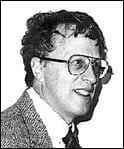
George Akerlof.
At the beginning of the 1960s, standard microeconomic theory was overwhelmingly based upon the perfectly competitive general equilibrium model. By the 1990s the study of this model was just one branch of economic theory. Then, standard papers in economic theory were in a very different style from now, where economic models are tailored to specific markets and specific situations. In this new style, economic theory is not just the exploration of deviations from the single model of perfect competition. Instead, in this new style, the economic model is customized to describe the salient features of reality that describe the special problem under consideration. Perfect competition is only one model among many, although itself an interesting special case. Since the “Market for ‘Lemons'” was an early paper in this new style of economics, its origins and history are a saga in that change.
I received my Ph.D. from MIT in 1966. I have heard this time described (mainly by MIT graduates of the time) as the “golden years” there, because of the many famous graduates. We were all good friends and there was considerable economic discussion amongst us. I believe that there was a rather smug notion that the major economic problems had been solved, especially in macroeconomics, and maybe also in microeconomics. Macroeconomics was by the neoclassical synthesis, which explained the existence of unemployment by money wages that were slow to change in response to excess demand for labor. Thus wages might be above market clearing, so that some labor would be unemployed. That left the following question unanswered: what were the causes of economic growth. Two seminal papers in this field had been written by Robert Solow. Both of them showed that the previous view, that capital was a leading cause of economic growth, was likely to be false. First, diminishing returns to capital would eventually limit the contribution of capital deepening to growth. (In the long run all new capital would be devoted to the equipping of new entrants to the labor force, so there would be no increases in capital relative to labor.) Second, if capital and labor received their respective marginal products, then, empirically, there was a significant “residual” in the explanation of growth: capital could explain only a small fraction of increases in U.S. productivity.
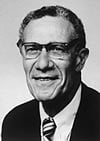
Robert Solow.
Growth theory
Growth theory after these two Solow articles was Galapagan, somewhere between the old economics and a new economics that has since come into being. The old economics was based on a variety of prejudices. The first of these was the primacy of the general equilibrium competitive model with complete information. That did not mean that all economists believed that this model was a particularly good description of markets and how they operated, but it did give them a benchmark from which to measure the consequences of departures from its strict assumptions. In this way economists used the competitive model as the major road map of their world. The second basic tenet of the economics of the time lay in the simplicity of the mathematics that described economics. That was all summarized in Paul Samuelson‘s Foundations (1947) as it could also be seen in textbooks like R.G.D. Allen’s (1938) Mathematical Analysis for Economists. This mathematics emphasized maximization of continuous differentiable functions of many variables subject to constraints. The growth theory of the time resulted in the emergence of a new and qualitatively different kind of modeling, with qualitatively different mathematics; but it was still accompanied by a stubbornly unchanged economics. (It was like some of those half-fish/half-lizards evoked by Charles Darwin). Such modeling emerged after Solow’s two seminal articles when it was discovered that there could be a wide variety of possible growth technologies. Solow himself provided two different types: capital could be putty-putty, which meant that capital-labor ratios were just as malleable after they were installed as before, or capital could be putty-clay, where capital-labor ratios could be set at the time that capital was initially constructed, but not changed afterwards. In another variant of a similar theme, Solow built systems in which new technologies could only be introduced as they were embodied in new capital. These new systems introduced a mathematics that could deal with goods (in this case capital) that varied continuously in their quality.
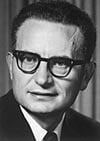
Paul Samuelson.
But Solow had only made the first beachhead in what would be modern economics. He had taken that first essential step out of the sea, but he failed to go further. The next step was to use the type of framework that he had developed to describe markets in which goods varied by quality. The development of “peculiar” assumptions had been particularly isolated in growth theory to the technological aspects of the problem. There was no analysis as to how different qualities of goods (in the case of growth theory, different qualities of capital) would affect markets. But the stage was set to analyze more generally the behavior of markets with many different types of product quality.
Discovering asymmetric information
Growth theory set the stage in yet another way for the discovery of asymmetric information. It was believed that a significant part of the so-called “growth residual,” which is that part of growth that could not be accounted for by increases in capital or increases in the labor force, could be explained by the growth in education. Edward Denison’s (1962) Sources of Economic Growth and the Alternatives Before Us, which followed Solow’s methodology in calculation of growth residuals, made estimates of the effects of increased education. Denison used the differential in earnings of those with different schooling as a basis for estimating how changes in education would affect productivity. But, as he acknowledged, his estimates were invariably polluted, since those with more schooling also on the average had greater natural ability, which would also contribute to their earnings. This made Theodore Schultz‘s (1963) The Economic Value of Education – with its exposition of the concept of human capital and its program of evaluating its returns – especially relevant. I remember in 1964-65 pondering the implications of Schultz’s estimates for growth accounting. I asked myself: how could we know the extent to which returns to schooling reflected increased productivity due to education or the extent to which it merely acted as an “egg-grader” that sorted people into different ability classes. This thought, which I shared with my Prize co-recipient Joseph Stiglitz, was the initial step toward “The Market for ‘Lemons.'”
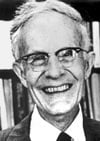
Theodore Schultz.
I put this idea on the back-burner, to be pursued in due course. It was a useful bit of structure, but how could it be applied more generally? What would constitute a paper? Perfect competition with perfect information was so useful precisely because it provided a framework for theoretical analysis: one could analyze in this framework the existence or non-existence of deviations from economic efficiency. The asymmetric information and the inefficiency of the egg-grader model of education might be interesting structure, but it would take some exploration before I could develop these thoughts into a useful paper.
Looking at the automobile market
I turned my focus, instead, to the effects of asymmetric information in the automobile market. My interest in economics had always been in macroeconomics. I believed then, as I still believe today, that unemployment, with the financial hardship and the loss of identity that it entails, is a very major problem. This led me to consider the causes of the business cycle. At the time a very major factor in the business cycle was the fluctuation in sales of new cars, leading naturally to the question: why was there so much variation in new car purchases? In order to tackle this problem, I had to see why people purchased new cars, rather than rented cars, or purchased used cars. There, asymmetric information seemed to play a key role. I knew that a major reason as to why people preferred to purchase new cars rather than used cars was their suspicion of the motives of the sellers of used cars. As mentioned earlier, this insight, of course, had been central to the horse trading profession for centuries, but I did not know that at the time either.

I did not have the modeling ability to be able to show what I really wanted. I really wanted to show that the informational advantage of sellers of used cars over buyers of new cars, would force car buyers into the new car market and therefore exacerbate business-cycle fluctuations.1 But I did see that I could give interesting examples in which the market for used cars was diminished, possibly even to the point of collapse, by the presence of asymmetric information. I also realized then that this phenomenon, which I had first perceived in the market for education, would extend to a large number of other fields as well, including insurance markets and the market for loans, where borrowers vary by risk. Indeed, I soon saw that asymmetric information was potentially an issue in any market where the quality of goods would be difficult to see by anything other than casual inspection. Rather than being a handful of markets, the exception rather than the rule, that seemed to me to include most markets. Thus the paper that I would write would give the automobile market as the example, its potential “collapse” as the theorem, and then I would discuss how this example would apply to credit and insurance.
These ideas were at least somewhat well formulated at the time that I arrived at Berkeley as a new assistant professor fresh from graduate school in September 1966, and I had dinner with Tom Rothenberg, who was also new to the Berkeley faculty. Tom asked me what I was working on and I went down my list of different items. (I always keep a list of potential topics, partly because an idea is usually not useful on its own, but only in combination with another, and also for psychological reasons, so that when one idea fails, I can turn without remorse to another). Tom tells me today that he is quite sure that I knew that asymmetric information was at the top of my agenda. I am not so sure. In any case, he thought that the idea was quite intriguing and encouraged me to pursue it. With today’s customs, Tom and I would have agreed to work together on this, and it would probably have been a better paper if he had. In any case, I wrote my first draft, with the example that the market for used cars would collapse. My style of proof came from mathematics (specifically, from topology). Tom assured me that this style would be a hard sell to economists. He suggested that I should present it in more palatable terms, which would involve deriving the supply for used cars by owners and the demand by potential buyers, and showing that the only equilibrium of this market would involve no trade at all – indeed a market collapse. I followed his advice.
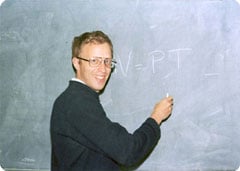
George Akerlof at Berkeley, 1966.
Rejections and acceptance
By June of 1967 the paper was ready and I sent it to The American Economic Review for publication. I was spending the academic year 1967-68 in India. Fairly shortly into my stay there, I received my first rejection letter from The American Economic Review. The editor explained that the Review did not publish papers on subjects of such triviality. In a case, perhaps, of life reproducing art, no referee reports were included.
Michael Farrell, an editor of The Review of Economic Studies, had visited Berkeley in 1966-67, and had urged me to submit “Lemons” to The Review, but he had also been quite explicit in giving no guarantees. I submitted “Lemons” there, which was again rejected on the grounds that the The Review did not publish papers on topics of such triviality.
The next rejection was more interesting. I sent “Lemons” to the Journal of Political Economy, which sent me two referee reports, carefully argued as to why I was incorrect. After all, eggs of different grades were sorted and sold (I do not believe that this is just my memory confusing it with my original perception of the egg-grader model), as were other agricultural commodities. If this paper was correct, then no goods could be traded (an exaggeration of the claims of the paper). Besides – and this was the killer – if this paper was correct, economics would be different.
I may have despaired, but I did not give up. I sent the paper off to the Quarterly Journal of Economics, where it was accepted.
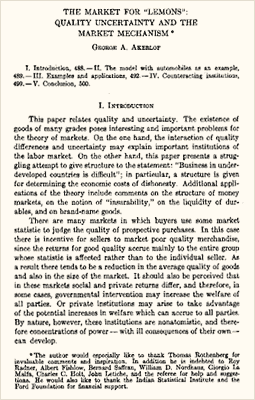
The “Lemons” paper when it was published in the Quarterly Journal of Economics in 1970.
Copyright © Quarterly Journal of Economics
I had had such a hard time getting this article published, that I was quite surprised, on a trip to England in the fall of 1973, to discover that, not only had it been read, but even with considerable enthusiasm. Since that time many scholars have fleshed out the implications of asymmetric information and its role in markets, especially Michael Spence and Joseph Stiglitz.
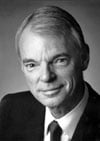

Michael Spence and Joseph Stiglitz.
I close with three lessons that might be drawn from my tale. First, “Lemons” was much less of a break with the economics of the time than might otherwise be interpreted. It was the natural extension of the on-going intellectual activity at MIT. (I used the analogy of the Galapagan lizards advisedly.) Second, many people were tremendously generous at all stages, in the writing, editing, and refereeing of this paper,2 and also later, in exploring its further implications – thus illustrating the extraordinary commitment of academics in general, and of economists in particular, to seek truth and to advance knowledge. Finally, economics is a powerful tool, but like a microscope, it focuses attention on some aspects of reality (especially the role of prices in markets), while it also diverts attention from other aspects. The economists of the time felt that it would violate their methodology to consider a problem, such as the role of asymmetric information, that was out of its traditional focus. There are still important areas of economics that are all but uncharted because of this limited focus. It is consistent with this interpretation that Daniel Kahneman, a leader in changing the focus of economics and one of last year’s prize winners, is not only a trained psychologist, but also, has special expertise in human optical illusion.

Daniel Kahneman.
References
* Akerlof, George A., “The Market for ‘Lemons’: Quality Uncertainty and the Market Mechanism.” Quarterly Journal of Economics, 84(3), pp. 488-500, 1970.
Allen, R.G.D., Mathematical Analysis for Economists. Macmillan: London, 1938.
Denison, Edward F., The Sources of Economic Growth and the Alternatives Before Us. Supplementary Paper No. 13. The Committee for Economic Development: New York, 1962.
Mishkin, Frederic S. “Illiquidity, Consumer Durable Expenditure, and Monetary Policy.” American Economic Review, 66(4), pp. 642-54, 1976.
Samuelson, Paul A., Foundations of Economic Analysis. Harvard University Press: Cambridge, MA, 1938.
Schultz, Theodore W., The Economic Value of Education. Columbia University Press: New York, 1963.
1. Rick Mishkin (1976) later developed this argument.
2. Including those editors and referees who rejected, rather than accepted.
Professor Akerlof has graciously provided the photographs of himself appearing in this essay. – Editor
First published 14 November 2003
